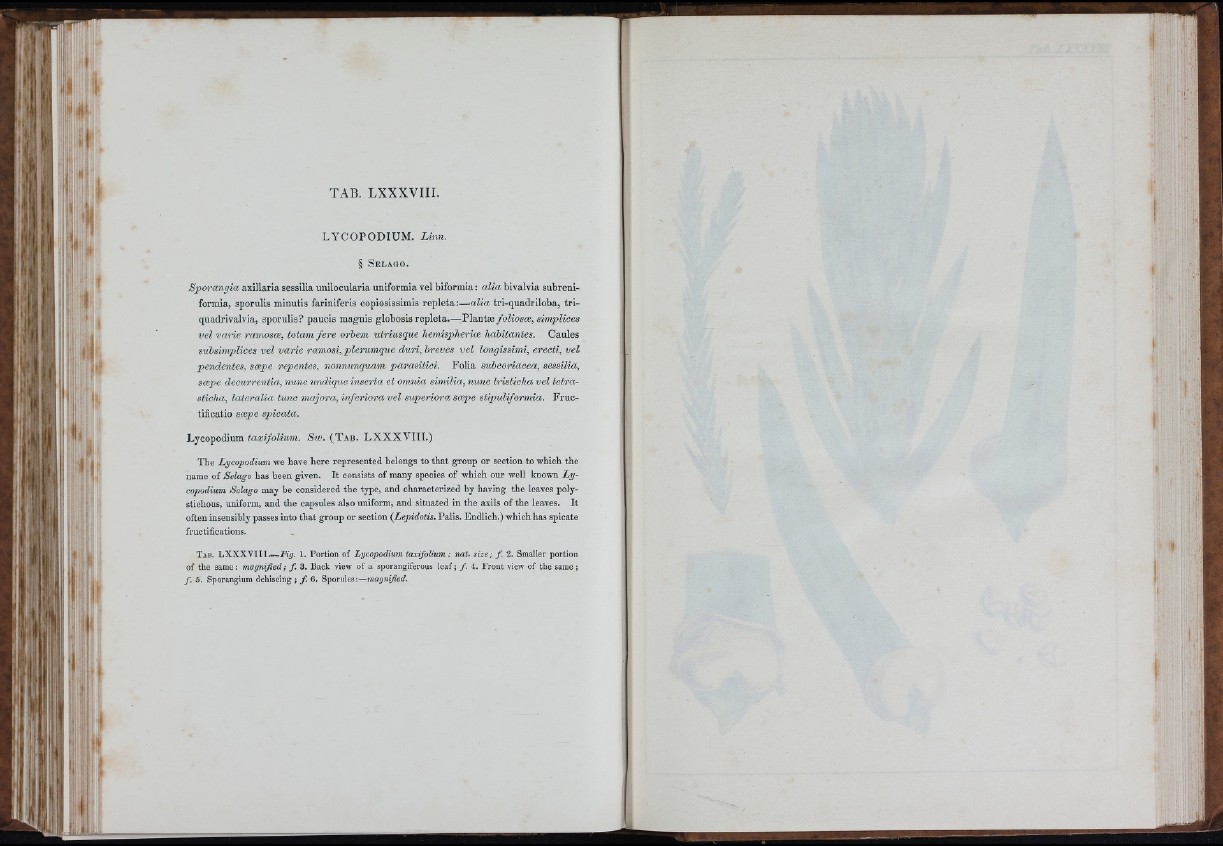
. r r "
! 5
I I
J '
’ « i
I
ill:
TAB. LX X XV III.
L Y C O P O D IU M . L in n .
§ S e l a g o .
S p o ra n g ia axillaria sessilia unilocularia uniformia vel biformia : a lia b ivalvia subreni-
formia, sporulis minutis fariniferis copiosissimis re p le ta :— a lia tri-quadriloba, tri-
quadrivalvia, sporulis? paucis magnis globosis repleta.— Plantæ foliosæ, simplices
v el v a rie ramosoe, totam fe r e orbem utriusque hemispheriæ habitantes. Gaules
subsimplices v el va rie ramosi, p le rum q u e duri, breves v e l longissimi, erecti, v el
pendentes, sæpe repentes, nonnunquam p a ra sitic i. Folia subcoriacea, sessilia,
sæpe decurrentia, nunc undique inserta et omnia similia, nunc tristich a v el tetra-
sticha, la te ra lia tunc majora, in fe r io ra v el superiora sæpe s tip u lifo rm ia . Fruc-
tificatio sæpe spicata.
Lycopodium ta x ifo lium . S w . ( T a b . L X X X V I I I .)
The Lycopodium we have here represented belongs to that group or section to which the
name of Selago has been given. I t consists of many species of which our well known L y copodium
Selago may be considered the type, and characterized by having the leaves poly-
stichous, imiform, and the capsules also uniform, and situated in the axils of the leaves. I t
often insensibly passes into that group or section (Lepidotis. Palis. Endlich.) which has spicate
fructifications.
T a b . LXXXVI I I .— 1. Portion of Lycopodium taxifolium : nat. s ize ; f 2. Smaller portion
o f the same: mag n ified ; f . 3. Back view of a sporangiferous le a f ; f . 4. Front view of the same;
/ . 6. Sporangium dehiscing ; f . 6. Sporules:—magnified.
.1 i